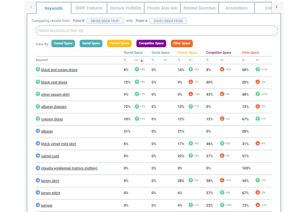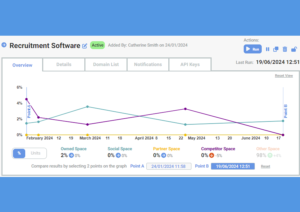SERPsketch doesn’t have a specific keyword research feature so you might be wondering how useful it could be for building out your content strategy or topic clusters.
But the depth of data provided in the questions and related searches features means your keyword and content strategy is sharper when you add SERPsketch as a tool. It makes it quicker and easier for brands to understand the most important keywords and content for their prospective customers so that a more precise SEO and PPC strategy can be devised.
You see what your customers are seeing as they start their journey to purchase, knowing the questions they have that relate to your product, and the recommendations made by Google as the next step in their searching. This allows you to produce content ready to fulfil your potential customers’ needs before they even know them themselves!
Building out a SEO content strategy
For building out an SEO content strategy, a hub and spoke approach is recommended. This is sometimes known as “topic clusters” where there’s a key central topic (hub) with surrounding complementary topics that sit in the same cluster.
The hub is a core commercial page, such as a product page or an in-depth informational guide. It’s likely a very important category keyword. Let’s say you’re selling all sorts of bicycles online. There are so many different types of bikes these days, that it’s likely each bike type would be a hub of its own:
- Electric bikes
- Mountain bikes
- Hybrid bikes
- Road bikes
- Folding bikes
- Touring bikes
- Children’s bikes
- and more…
The spokes are supporting pages for that topic that help drive prospects back to the hub. The spokes are commonly supporting FAQs or related blog posts or other thought leader content, but more importantly they cover topics that feed into the main hub. So taking “road bike” as a hub, we might see spokes on the following topics:
Hub:
Road bike
Spokes:
Racing
Endurance
Aero
Gravel
Frames
Gear (e.g clothing, helmets, tyres)
Safety
Maintenance
Routes / best road biking destinations
A good SEO content strategy will build out online content for both your hubs and your spokes.
Developing your topic clusters with SERPsketch
You can use SERPsketch to build out your topic clusters.
We recommend either starting with your broadest commercial terms or really specific product terms. For example, one of our customers used SERPsketch to put in their specific product part numbers in order to see the questions and related searches appeared in SERPs to help them inform their product pages, ensuring that they answered the most frequent questions on their most important hub pages.
Let’s say you’re a flour producer and you want to start winning over the gluten-free flour market. Start by putting in the main keywords that you commercially want to rank for at the bottom of your user funnel e.g.
- gluten free flour
- gluten free flours
- gluten free baking
- gluten free cooking
- buy gluten free flour
- what flour is gluten free
Using the Questions and Related searches, you can identify potential hub and spoke topics and then run sketches against those to keep drilling down to get more ideas.
Using page one questions to build out your hub page
For our gluten-free flour producer, the key questions people search for can help them inform their hub page. Answering important questions on your key commercial pages will help you dominate SERPs. You can review the questions and prioritise those that make sense to answer from your brand.
From that initial commercial keyword set in SERPsketch, you can gather a big list of questions which you could group together.
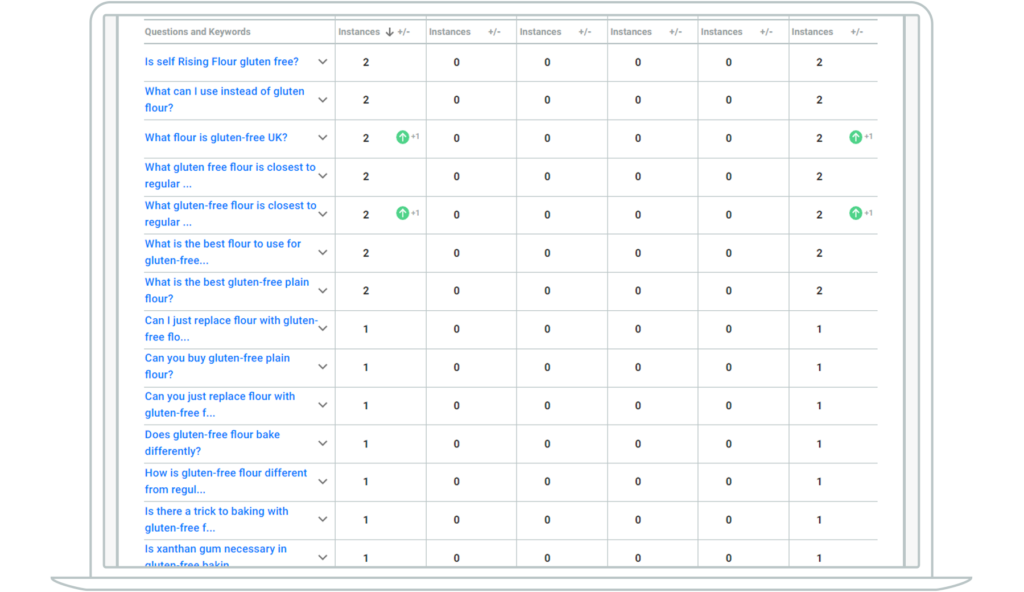
You might decide that some of those questions should be answered on your main hub page. For example:
- How is gluten-free flour different from regular flour?
- What is gluten-free flour made from?
- Why is gluten-free flour better?
Then you might decide that some fit in a sub-category (“spoke”). For example:
Plain flour
- What is the best gluten-free plain flour?
- Where can I find gluten-free flour?
- What is the best gluten-free plain flour?
- What plain flour is gluten-free?
Self-raising flour
- Is self rising flour gluten free?
Recipes
- Can I just replace flour with gluten-free flour?
- Can you just replace flour with gluten-free flour?
- What can I use instead of gluten flour?
Baking
- Is xanthan gum necessary in gluten-free baking?
- Is there a trick to baking with gluten-free flour?
Within the questions view, you can click on any of the Questions themselves to go to the page which is displaying the answer to that question. Take for example, this question about best gluten free flours. That leads to a Healthline.com article “The 14 best gluten-free flours”. But within that article there are some keywords worth noting – celiac/coeliac disease, non-coeliac gluten sensitivity – that you could indicate another “spoke” e.g. Coeliac disease.
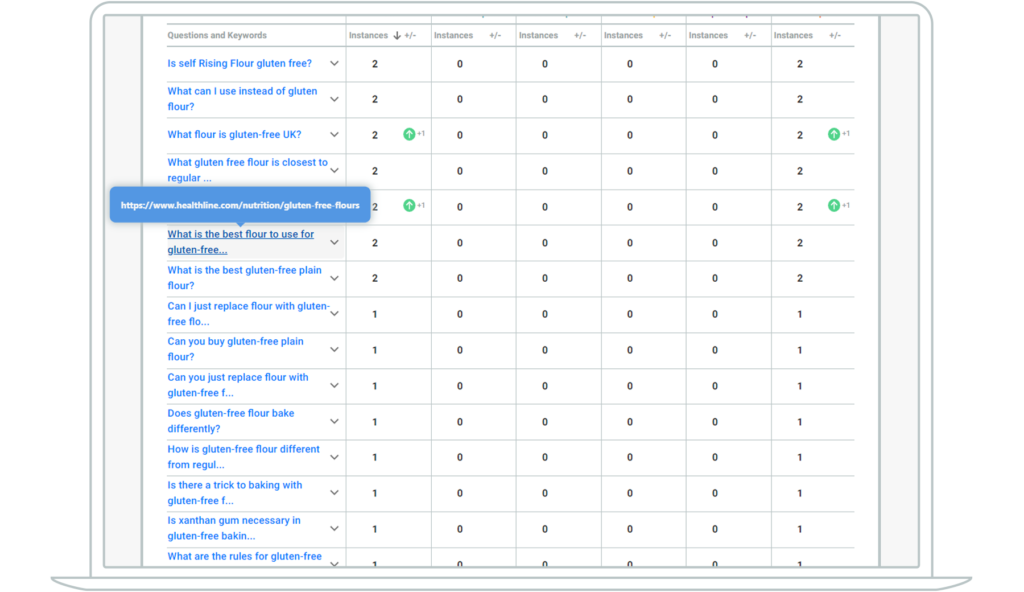
Devising your content strategy with SERPsketch
So far we’ve covered using just a handful of keywords to help create your topic clusters. But you get even more for your content strategy when you add all of the keywords from one topic cluster as a campaign sketch and see the combined results for questions and related searches for all of those keywords.
Here’s an example keyword set for cookware. We have 86 words in this keyword set.
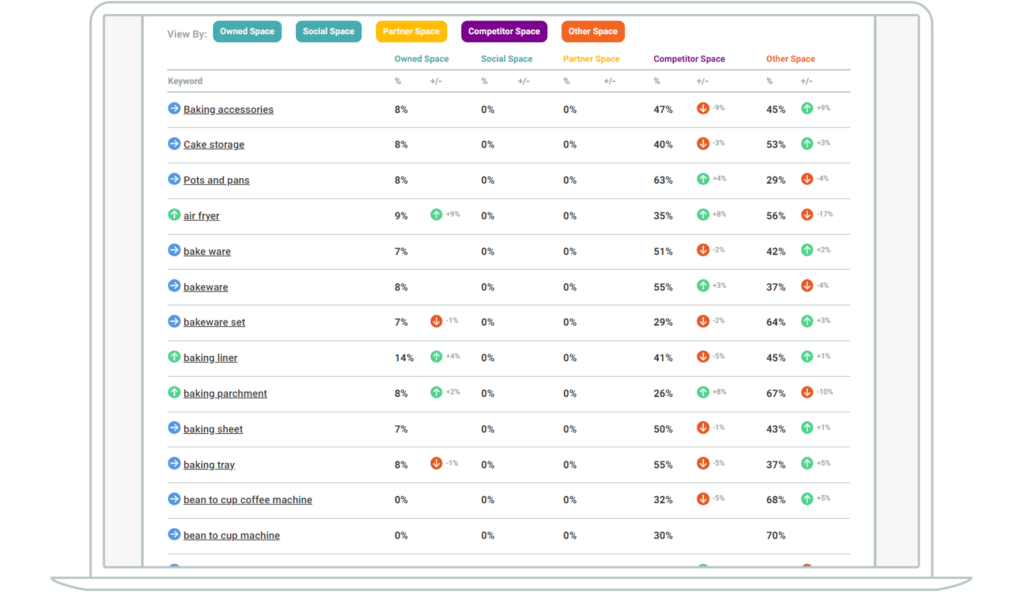
In SERPsketch we can see all the questions that have appeared on Page One SERPs for the various keywords in your keyword set.
Not only do you see all of the questions but you also see the number of instances that each question has appeared in a Page One SERP and so by sorting the data by total instances, you can start to prioritise writing content that will answer the most popular questions.
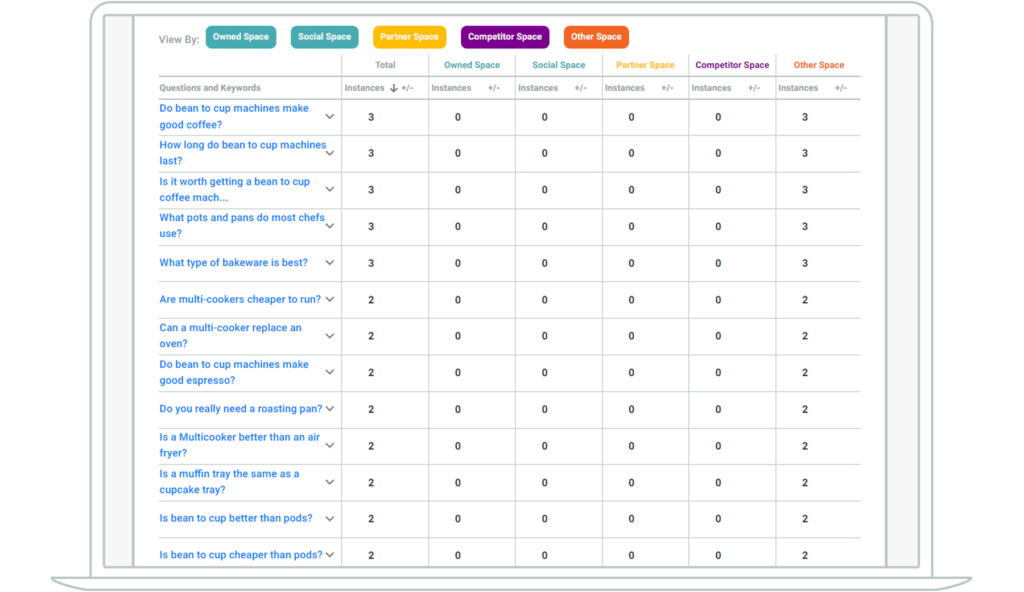
Related searches
Using the Related Searches you can similarly see any related searches that have appeared on the page one SERP for any of your keywords in the set. Again you can sort these by the number of keywords that they have appeared against (and can view the keywords too). And you can see which ones are increasing so in the below example, there’s a new keyword “pots & pans” that has appeared recently in the related searches versus the last time you ran the sketch.
By seeing this level of detail, you can identify new keywords that you might wish to prioritise, you can identify new keyword sets where you can see groupings that go together.
In our keyword list we have some keywords to do with preserving food – “food preservers” and “preserving pan”. By looking at the related searches we can see there are lots of other preserving-related keywords that we might want to consider adding to our cookware set, or that we might actually want to separate into a completely different keyword set for food perservation.
The related searches also provide some content ideas for blogs or FAQs:
- 10 examples of preserved foods
- How to preserve food for years
- 7 ways of preserving food
- 12 methods of food preservation
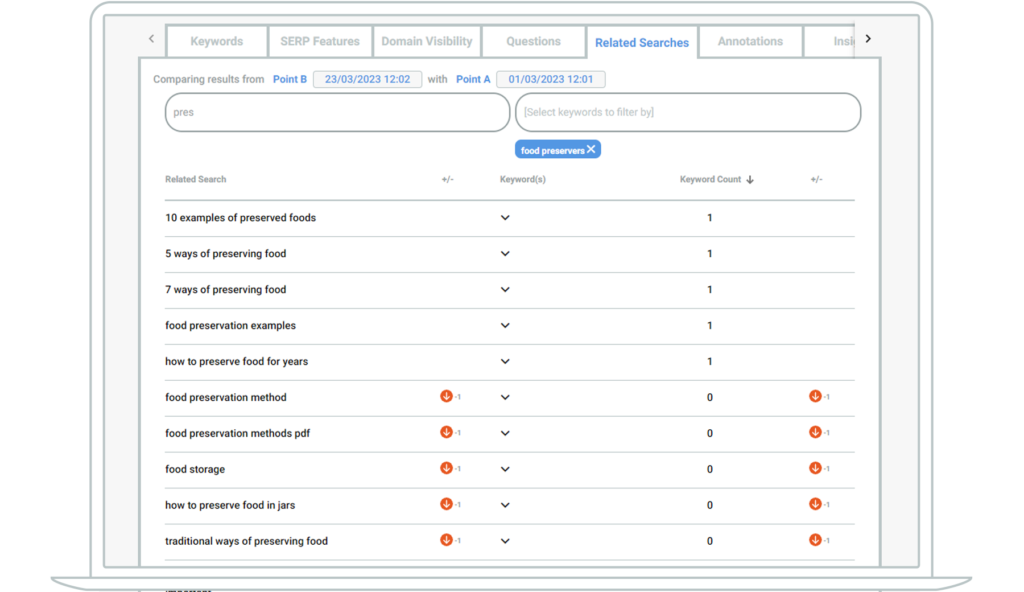
Though other SEO tools give you some idea of questions and related searches, they don’t give you the frequency or let you easily see which ones are new in on Page One results.
That’s why SERPsketch sharpens your SEO focus because it cuts out all the noise and allows you to keep a keen eye specifically on the results that show on Page One so that you can prioritise your content to win that space from competitors or others.
Get a free trial of SERPsketch and try it out with your own keyword set.


